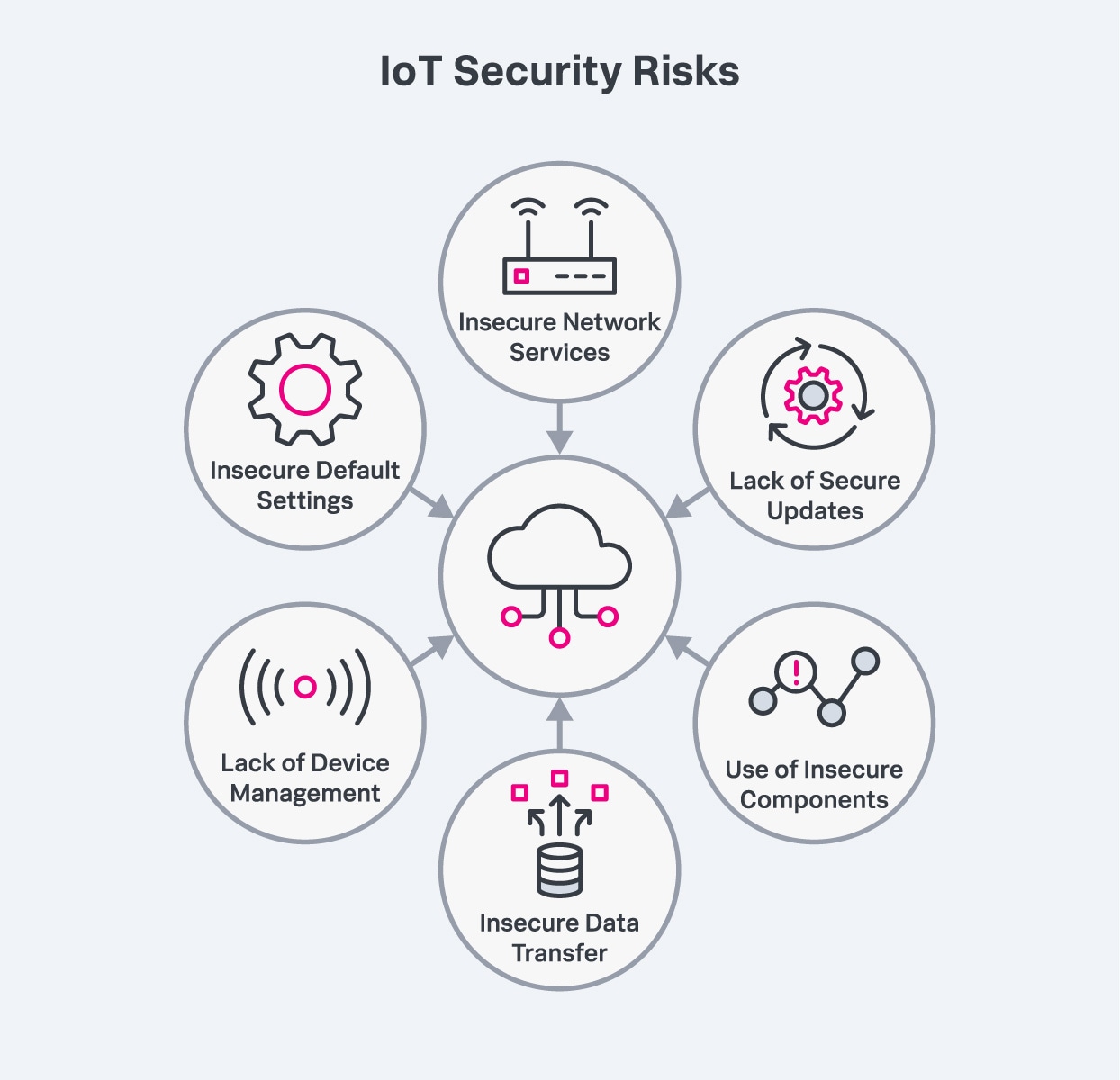Contents Overview
- Getting Started with SSH for IoT
- What Is SSH and Why Does It Matter?
- The Advantages of SSH in IoT Device Management
- How to Set Up SSH on IoT Devices
- Optimizing SSH for Enhanced Security
- Troubleshooting Common SSH Issues
- Advanced Techniques for Securing SSH Connections
- Best Practices for Managing SSH Access
- Top Tools and Resources for SSH Management
- Final Thoughts
Getting Started with SSH for IoT
Secure Shell (SSH) has emerged as an indispensable tool for managing IoT devices securely and effectively. As the Internet of Things (IoT) continues to grow at an unprecedented rate, ensuring secure and reliable access to these devices has become a top priority. SSH, or Secure Shell, provides a reliable framework for remote management, allowing administrators to interact with IoT devices from anywhere in the world while maintaining the highest standards of security.
In today's interconnected world, IoT devices are deployed across various sectors, ranging from smart homes to industrial automation systems. The ability to manage these devices remotely is not just a convenience—it’s a necessity. SSH enables administrators to execute commands, transfer files, and monitor device performance without exposing sensitive data to potential threats. This guide will walk you through the essentials of SSH access for IoT devices, offering practical advice and actionable insights for both beginners and experienced professionals.
Whether you're managing a single IoT device or an entire network, understanding how to configure and utilize SSH effectively is crucial. This article will explore the benefits, setup process, security considerations, and best practices for SSH access to IoT devices, equipping you with the knowledge to implement secure remote management solutions.
Read also:Explore Hdhub4u Your Ultimate Source For Highquality Movies
What Is SSH and Why Does It Matter?
SSH, or Secure Shell, is a cryptographic network protocol designed to provide secure communication over unsecured networks. Unlike outdated protocols such as Telnet, which transmit data in plain text, SSH encrypts all data exchanged between the client and the server, making it nearly impossible for attackers to intercept or manipulate sensitive information.
In the context of IoT device management, SSH plays a pivotal role. IoT devices are often deployed in remote or hard-to-reach locations, making physical access impractical or even impossible. SSH bridges this gap by allowing administrators to remotely configure, monitor, and troubleshoot these devices without needing to be physically present. Furthermore, SSH supports multiple authentication methods, including password-based and key-based authentication, ensuring that only authorized users can gain access to the devices.
Some of the standout features of SSH include:
- Strong Encryption: Ensures data confidentiality during transmission.
- Authentication Mechanisms: Verifies the identity of users attempting to access the device.
- Integrity Checks: Prevents unauthorized modifications to data during transmission.
- Support for Tunneling and Port Forwarding: Facilitates secure communication between devices.
The Advantages of SSH in IoT Device Management
Adopting SSH for IoT device management brings a host of benefits that extend beyond enhanced security. These advantages encompass operational efficiency, scalability, and flexibility, making SSH an ideal choice for modern IoT environments.
One of the most significant benefits of SSH is its ability to provide robust security. By employing advanced encryption algorithms, SSH ensures that sensitive information, such as login credentials and configuration commands, remains confidential during transmission. This level of protection is particularly critical for IoT devices, which often handle mission-critical data and are prime targets for cyberattacks.
Another key advantage of SSH is its support for remote accessibility. With SSH, administrators can manage IoT devices from virtually any location, provided they have an internet connection. This eliminates the need for physical access, saving both time and resources. Moreover, SSH's compatibility with automation tools enables administrators to schedule tasks and execute scripts remotely, further streamlining operations.
Read also:Discover The Story Behind Fenty Beauty A Brand Redefining Beauty Standards
Scalability and Flexibility
SSH's scalability is another factor that makes it ideal for managing large-scale IoT deployments. Whether you're overseeing a small network of devices or a vast ecosystem of connected devices, SSH can handle the workload efficiently without compromising performance. Additionally, SSH's flexibility allows it to integrate seamlessly with a wide range of operating systems and platforms, making it a versatile solution for diverse IoT environments.
How to Set Up SSH on IoT Devices
Setting up SSH on IoT devices involves several key steps, from enabling the SSH service to configuring access permissions. Proper setup is essential to ensure that the SSH connection is both functional and secure.
Step 1: Enabling SSH on the IoT Device
Most IoT devices come equipped with SSH pre-installed, though it may need to be activated manually. The activation process varies depending on the device's operating system. For instance, on a Raspberry Pi running Raspbian, you can enable SSH by:
- Using the
raspi-configtool to toggle SSH on. - Creating an empty file named
sshin the boot partition to activate the service automatically on startup.
Step 2: Configuring SSH Settings
Once SSH is enabled, configuring the settings is the next step to enhance both security and usability. This includes creating user accounts, defining access permissions, and modifying the SSH daemon configuration file (/etc/ssh/sshd_config) to suit your specific requirements.
Step 3: Testing the SSH Connection
After completing the configuration process, testing the SSH connection is crucial to ensure everything is working as expected. You can use an SSH client such as PuTTY (for Windows) or the built-in terminal (for macOS/Linux) to connect to the IoT device. The command typically follows this format:
ssh username@device_ip_address
Optimizing SSH for Enhanced Security
Configuring SSH for optimal security is essential to protect your IoT devices from unauthorized access and potential cyber threats. This involves implementing a series of security measures and best practices to fortify your SSH setup.
1. Disable Password Authentication
Password-based authentication is susceptible to brute-force attacks, making it a significant security risk. To address this vulnerability, disable password authentication and adopt key-based authentication instead. This requires generating an SSH key pair and configuring the IoT device to accept only the private key for authentication.
2. Change the Default SSH Port
Changing the default SSH port (22) to a non-standard port can deter automated attacks. Update the Port setting in the sshd_config file and ensure your firewall rules are updated accordingly to reflect the change.
3. Implement IP Whitelisting
Restricting SSH access to specific IP addresses or ranges adds an extra layer of security. You can achieve this by configuring your firewall or using tools like iptables. This ensures that only trusted devices can establish an SSH connection.
4. Enable Two-Factor Authentication (2FA)
Integrating two-factor authentication (2FA) into your SSH setup significantly enhances security. Tools like Google Authenticator can be used to require a one-time password in addition to the private key, providing an additional layer of protection.
Troubleshooting Common SSH Issues
Although SSH is a reliable protocol, users may encounter issues during setup or operation. Understanding these common problems and their solutions can help ensure smooth and uninterrupted access to IoT devices.
Issue 1: Connection Refused
A "connection refused" error typically indicates that the SSH service is not running or the port is blocked. To resolve this:
- Verify that the SSH service is active using the command
sudo systemctl status ssh. - Check the firewall settings to ensure the SSH port is open and accessible.
Issue 2: Permission Denied
A "permission denied" error may arise due to incorrect credentials or misconfigured permissions. To troubleshoot:
- Double-check the username and private key to ensure they are correct.
- Confirm that the user has the necessary permissions specified in the
sshd_configfile.
Issue 3: Slow Connection
A slow SSH connection can be caused by network latency or misconfigured settings. To improve performance:
- Switch to a wired connection instead of Wi-Fi for better stability and speed.
- Optimize the
sshd_configfile by disabling unnecessary features that may slow down the connection.
Advanced Techniques for Securing SSH Connections
For organizations managing critical IoT infrastructure, implementing advanced security measures is essential to safeguard SSH connections. These measures go beyond basic configurations and provide an additional layer of protection against sophisticated threats.
1. Use SSH Certificates
SSH certificates offer a more scalable and secure alternative to traditional key-based authentication. By issuing certificates signed by a trusted Certificate Authority (CA), you can streamline user authentication and revoke access as needed, ensuring greater control over who can connect to your IoT devices.
2. Implement Intrusion Detection Systems (IDS)
An Intrusion Detection System (IDS) can monitor SSH traffic for suspicious activity, such as repeated failed login attempts or unusual connection patterns. Tools like Fail2Ban can automatically block IP addresses that exhibit malicious behavior, reducing the risk of unauthorized access.
3. Regularly Update SSH Software
Keeping your SSH software up to date is crucial to protect against known vulnerabilities. Regularly check for updates and apply patches promptly to ensure your IoT devices remain secure and protected against emerging threats.
Best Practices for Managing SSH Access
Following best practices is essential for maintaining secure and efficient SSH access for IoT devices. These practices encompass user management, access control, and ongoing monitoring to ensure long-term security and reliability.
1. Limit User Privileges
Grant users only the minimum level of access required to perform their tasks. Avoid using the root account for SSH access and create separate accounts with limited permissions to minimize the risk of accidental or malicious damage.
2. Rotate SSH Keys Regularly
Regularly rotating SSH keys reduces the risk of compromised credentials. Establish a schedule for key rotation and ensure all users are informed of the changes to maintain a secure environment.
3. Monitor SSH Logs
Regularly reviewing SSH logs can help identify potential security threats or unauthorized access attempts. Logs are typically stored in /var/log/auth.log on Linux-based systems and provide valuable insights into SSH activity.
Top Tools and Resources for SSH Management
Several tools and resources can simplify SSH management and enhance security. These include SSH clients, configuration utilities, and monitoring solutions designed to streamline the management process.
1. SSH Clients
Some of the most popular SSH clients include:
- PuTTY (for Windows)
- OpenSSH (for macOS/Linux)
- Termius (cross-platform)
2. Configuration Tools
Tools like Ansible and Puppet can automate SSH configuration across multiple IoT devices, ensuring consistency and reducing the need for manual intervention.
3. Monitoring Solutions
Monitoring tools like Nagios and Zabbix can track SSH activity in real-time and alert administrators to potential issues or security breaches, helping to maintain a secure and efficient IoT environment.
Final Thoughts
SSH access for IoT devices is a powerful tool that enables secure and efficient remote management. By understanding the fundamentals of SSH, setting it up correctly, and implementing robust security measures, you can protect your IoT infrastructure while maximizing operational efficiency.
We encourage you to apply the best practices and advanced security measures outlined in this article to ensure your SSH connections remain secure. If you found this guide helpful, please share it with your network and leave a comment below with your thoughts or questions. For more insights into IoT management and cybersecurity

